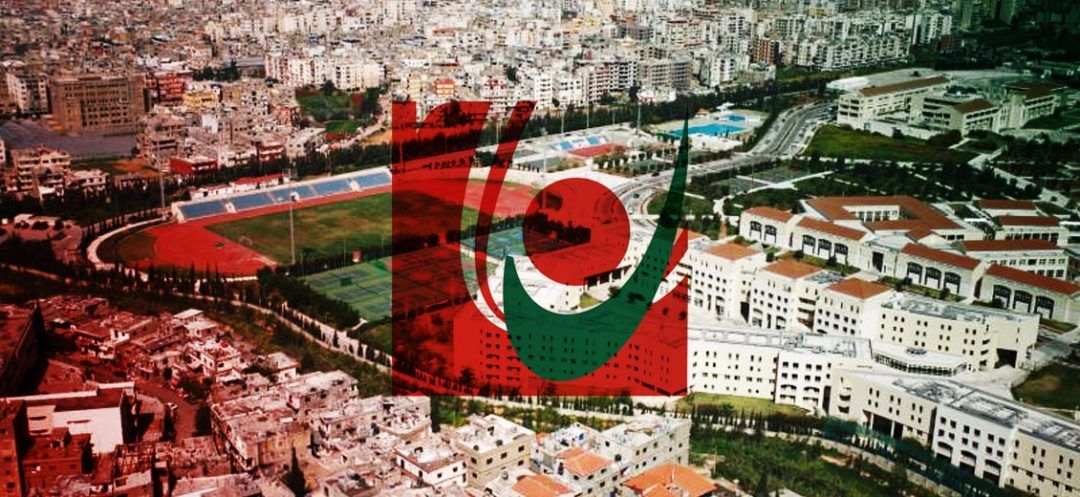
Faced with a financial crisis and constant threats of strikes that deeply affect its proper functioning, the Lebanese University (LU) has managed over the years to overcome all obstacles, ranking first among the six Lebanese universities that meet the criteria of the "QS World University Rankings," according to the 2025 world ranking evaluation. It has also moved from the 577th position to the 567th within a year, despite the numerous difficulties it has encountered.
Creation of the LU: A Milestone in Lebanon's Education History
Born from a popular student movement in Lebanon in a post-World War II context, the LU marks a crucial step in the evolution of the educational system in Lebanon. As the only public university in a country with more than 230,000 students, the LU alone accommodates about 80,000, representing 40% of all university students. It also employs 1,650 full-time lecturers and 2,500 contractual professors paid hourly, who are now calling for a change in status.
In 1951, after the Second World War and Lebanon’s independence in 1943, the need to create a public institution capable of providing accessible education for all became increasingly pressing. At the time, access to higher education was relatively limited and exclusive to private universities. This prompted the rise of a student movement calling for the establishment of a public university. After a series of general strikes and clashes between protestors and law enforcement forces, the Lebanese government met on February 5 and approved, on December 3, 1951, under President Bechara al-Khoury, the establishment of a public university by decree.
The initial goal was to allow all Lebanese access to higher education, regardless of social class or religion. As an essential pillar of educational democratization, the LU quickly expanded in the decades following its creation. Its first faculties included Letters and Humanities, followed by the faculties of Law and Political Science, Sciences, and Medicine. Additional faculties were subsequently added, covering a wide range of disciplines.
Research institutes and centers were also integrated, contributing to its expansion and development. Today, the institution comprises 16 faculties and three doctoral schools. The Higher Institute of Applied and Economic Sciences (ISSAE-CNAM), in collaboration with the National Conservatory of Arts and Crafts (CNAM) in France, is also an integral part of the LU.
Major Challenges
Although the Lebanese University is widely recognized for its central role in public education, it has also faced numerous challenges. Successive economic crises in Lebanon have affected the budgets allocated to the university, sometimes leading to strikes by professors and students protesting against the deteriorating working and learning conditions.
Political interference and the instrumentalization of the institution for purposes that serve those in power have often undermined its independence. The management of the LU has often been influenced by political tensions, reflecting the country’s sectarian divisions. Nevertheless, despite these obstacles, the university continues to fulfill its mission of providing public education, welcoming tens of thousands of students each year.
A Budget Below the University’s Real Needs
The lack of funding is one of the major challenges that have worsened since the economic crisis hit the country in 2019. Set at $55 million for the year 2024, the LU's budget is insufficient to meet the institution’s real need, estimated at $75 million. Between 2019 and 2023, funds allocated to the LU decreased from $240 million to $26 million. To bridge this gap, the Ministry of Education has developed a plan requiring funding based on the government's capacities, aimed at transforming the LU into a university focused on production rather than solely on research. For 2025, according to caretaker Education Minister Abbas Halabi, the budget allocated to the LU is estimated at $80 million.
Contractual and Part-time Professors
The issue of hourly-paid contractual professors who are seeking recognition as full-time staff continues to stir major controversy. On Monday, the representative committee of the LU's contractual professors announced "a general and open-ended strike on the first day of the 2024-2025 academic year" until their demands are finally approved by the Council of Ministers.
This issue has been repeatedly included on the Council’s agenda, without success. Today, a new carefully prepared project, developed in consultation with the university president, Bassam Badran, is still awaiting submission to the government. It concerns between 1,200 and 1,250 professors, 55% Muslims and 45% Christians. It takes into account five essential criteria, as previously affirmed by the caretaker minister of education: the university's needs, the professors' competence, their experience, their seniority, and the sectarian balance, the minister noted. Will the government finally address the issue of the LU, whose sustainability largely depends on its ability to support the institution financially and administratively?
Read more



Comments